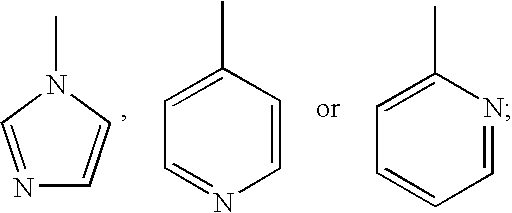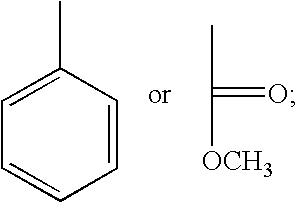Nano-fiber material and salt rejection filtration material
- Summary
- Abstract
- Description
- Claims
- Application Information
AI Technical Summary
Benefits of technology
Problems solved by technology
Method used
Image
Examples
example
Example 1
[0024]10 g of sodium styrenesulfate, 40 g of 4-vinyl pyridine, 10 g of styrene, 50 g of deionized water and 50 g of isopropanol (IPA) were dissolved in a reaction flask, and stirred under an N2 atmosphere at 70° C. A solution containing 0.2 g of potassium persulfate (KPS) in 10 mL of deionized water was slowly added into the reaction flask, and kept for 3 hours. The mixture was dipped into a 1%-3% sodium chloride (NaCl) solution for purification. After purification, 49.8 g of a polymer was obtained. (83%)
example 2
[0025]10 g of sodium styrenesulfate, 20 g of 4-vinyl pyridine, 10 g of styrene, 50 g of deionized water and 50 g of isopropanol (IPA) were dissolved in a reaction flask, and stirred under an N2 atmosphere at 70° C. A solution containing 0.2 g of potassium persulfate (KPS) in 10 mL of deionized water was slowly added into the reaction flask, and kept for 3 hours. The mixture was dipped into a 1%-3% sodium chloride (NaCl) solution for purification. After purification, 36 g of a polymer was obtained. (90%)
example 3
[0026]10 g of sodium styrenesulfate, 40 g of 4-vinyl pyridine, 7 g of styrene, 50 g of deionized water and 50 g of isopropanol (IPA) were dissolved in a reaction flask, and stirred under an N2 atmosphere at 70° C. A solution containing 0.2 g of potassium persulfate (KPS) in 10 mL of deionized water was slowly added into the reaction flask, and kept for 3 hours. The mixture was dipped into a 1%-3% sodium chloride (NaCl) solution for purification. After purification, 50.1 g of a polymer was obtained. (88%)
PUM
| Property | Measurement | Unit |
|---|---|---|
| Diameter | aaaaa | aaaaa |
Abstract
Description
Claims
Application Information
 Login to View More
Login to View More - R&D
- Intellectual Property
- Life Sciences
- Materials
- Tech Scout
- Unparalleled Data Quality
- Higher Quality Content
- 60% Fewer Hallucinations
Browse by: Latest US Patents, China's latest patents, Technical Efficacy Thesaurus, Application Domain, Technology Topic, Popular Technical Reports.
© 2025 PatSnap. All rights reserved.Legal|Privacy policy|Modern Slavery Act Transparency Statement|Sitemap|About US| Contact US: help@patsnap.com



